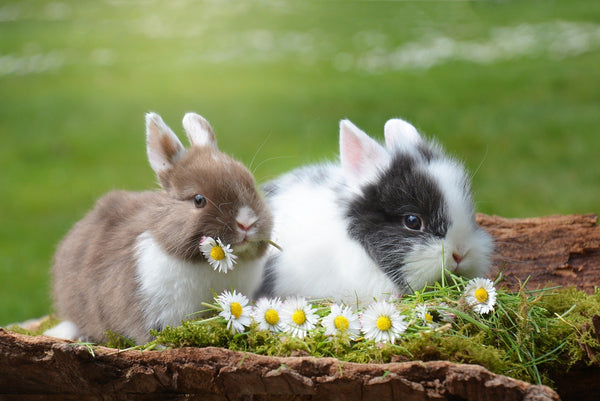
If you own a rabbit or planning to adopt one, it’s essential to understand all about rabbits including your pet’s anatomy. Rabbits are tiny creatures, endearing. It’s essential to understand what makes your lovable rabbit a rabbit, with their big eyes, twitchy noses, and cottontail. Over the last thousands of years, humans have been exploring what makes these cute creatures what they are. After learning about the rabbit’s anatomy, maybe you will understand your pet’s behaviors even more? Let’s learn the rabbit’s anatomy:
Rabbit Anatomy: Big Ears

Have you wondered why rabbits have such big ears? That’s because they need to hear better. Their ears move independently. Their independent ears allow rabbits to target danger in any direction they move.
Protruding Eyes

Have you noticed how big your rabbit’s eyes are? They protrude on the sides of its head. What these protruding eyes result in is 360-degree vision. Though, seeing in front of their nose is an issue. They can see their predators from (almost) every side this way. Rabbits ‘see’ with their top lip, too. They can tell if something is edible by touching with their sensitive top.
Growing Teeth

Did you know that a rabbit’s teeth continue to grow? They grow their teeth up to 5 inches in a year. Since rabbits eat grass, they gnaw and wear down their teeth that way. Keep your rabbit’s teeth in excellent condition by feeding him or her with hay. Their teeth are so big that they are set apart by other rodents just by their size.
Twitchy Nose

Have you wondered why your rabbit’s nose twitches? The fact is, rabbits are sensitive creatures. When a rabbit’s receptors are exposed to air that they are trying to detect imminent danger by pulling their nose. When your rabbit is relaxed, they will stop twitching their nose.
Rabbit’s Digestion

Rabbits digest in two stages; from chewing food, then passing it from the upper digestive tract. It is then mixed with stomach acids and goes on into the lower digestive system. Fiber is extracted and turns into rabbit droppings. The liquid parts ferment in their caecum. The caecum works by the bacteria releasing the nutrients from plant matter. This becomes pellets (caecotrophs). Your rabbit will then eat this while then passing along more absorbed nutrients once the bacteria acts.
Here Are 4 Perfect Foods for the Ultimate Rabbit Diet
Back

Rabbits do not have strong backs because they use the strength of their back legs. Their backs can be damaged quite easily. When you or a child handle a rabbit, be sure to treat their back safely by letting them support their back and legs. If a rabbit feels insecure while being held, they will struggle. It’s best to keep interaction at the ground level, which rabbits prefer anyway.
Legs

Rabbits, especially the larger breeds, have strong and sturdy legs, allowing them to jump and dig. They will whack their legs on the ground if they need to alert other rabbits in the area to danger. Legs have a significant role in a bunny's anatomy.
Cottontail

The tail also called a ‘scut’ is not just used as a cute decoration. A wild rabbit has a pale underside that is a danger signal. Rabbits use it as communication for rabbits in a big area are feeding.
What do cottontail rabbits eat?
How long do cottontail rabbits live?
Are cottontail rabbits endangered?
Related Posts:
- Dutch Rabbit Adoption: Should You Do It?
- How to Care for a Rabbit at Home
- Best Rabbit Food: What You Should Be Feeding Your Rabbit




